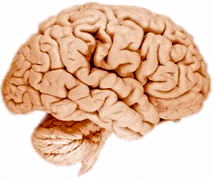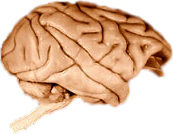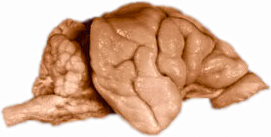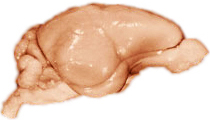What Can Structures of the Brain Tell Us?
So far we have looked at brains, comparing their sizes and outer appearances. We have thought a little about intelligence and the relation between brain and body size. We have explored a bit about the encephalization quotient. We have seen many different kinds of brains, but only from the outside.
What if we look at these brains from the inside? What will we see? What can we learn by slicing into a brain and exploring the structures inside? What would you like to learn?
Looking at structures of the brain of an animal can reveal much about that animal. Have you thought of any differences between animals that interests you? As the pictures reveal, the brains of animals come in a large variety of sizes, shapes, and degrees of complexity. Why are they so varied? In what ways do different brains differ from one another? Do larger brains give greater adaptability to their owners? How are the observed differences in brain's external appearance reflected in their internal structure? Are different brains made up of different materials?
First, let's talk about the basics. What does it mean to "slice" a brain?

 © Serendip® 1994 - All rights reserved. Privacy Policy
© Serendip® 1994 - All rights reserved. Privacy Policy




